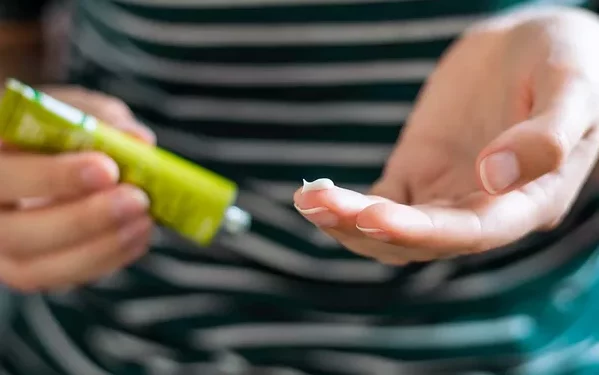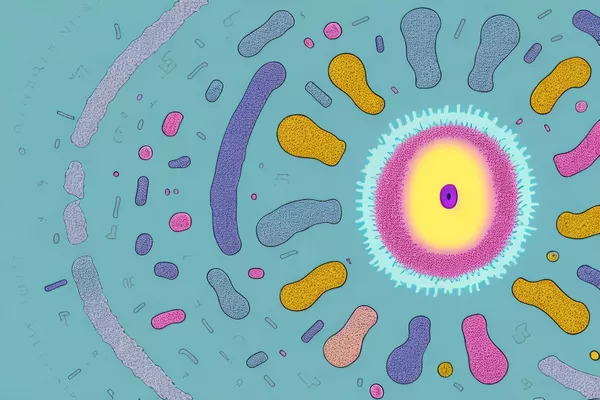Ringworm is a common fungal infection that affects the skin, hair, and nails. Despite its name, it is not caused by a worm, but rather by a group of fungi known as dermatophytes. These fungi thrive on the skin, hair, and nails, and cause infections that result in visible lesions. Understanding what ringworm lesions look like can help you identify the infection early and seek proper treatment.
In this article, we will explore the appearance of ringworm lesions, how they vary depending on the affected area, and the different types of ringworm that exist. We will also discuss other important details, such as symptoms, causes, and how to differentiate ringworm from other skin conditions.
Basic Characteristics of Ringworm Lesions
Ringworm lesions have a distinctive appearance, which is often the key to recognizing the infection. The most notable feature of a ringworm lesion is the circular or ring-like shape. The lesion typically has raised edges and clear skin in the center, which creates the appearance of a ring. This is why the condition is called “ringworm.”
The borders of the lesion may be red, inflamed, and slightly scaly, while the center of the lesion often looks normal or slightly lighter than the surrounding skin. The infection usually starts as a small spot or patch that gradually expands over time.
The size and appearance of the lesions may vary depending on several factors, including the location of the infection and the severity of the condition. In some cases, multiple ringworm lesions may develop and spread to other areas of the body.
Ringworm on the Body (Tinea Corporis)
One of the most common areas for ringworm to appear is on the body, also known as tinea corporis. When ringworm affects the body, the lesions often start as small, red, circular spots that may be itchy. As the infection progresses, the lesions expand in size, forming a ring-like pattern with a raised, scaly edge.
The center of the lesion may be smooth or slightly scaly, and in some cases, it may become discolored, with a lighter or darker tone than the surrounding skin. The edges of the lesion are often more inflamed and prominent compared to the center.
Ringworm on the body is typically found on the arms, legs, torso, and sometimes the neck or face. The infection can spread if not treated properly, and in some cases, new lesions may appear close to the original lesion.
Ringworm on the Scalp (Tinea Capitis)
When ringworm affects the scalp, it is referred to as tinea capitis. The lesions on the scalp may look slightly different than those on the body, but they still retain the characteristic ring-like appearance. In this case, the lesion may appear as a patch of scaly, bald skin.
Tinea capitis can cause the hair to break off at the scalp, leading to hair loss in the affected area. The lesion may be red or inflamed at the edges, with the center of the patch appearing smoother or lighter. Some individuals may also experience itching or discomfort in the affected area.
In severe cases, tinea capitis can cause the formation of abscesses or pustules (small, pus-filled bumps) around the lesion. If the infection is left untreated, it can lead to permanent scarring or hair loss in the affected area.
Ringworm on the Feet (Tinea Pedis)
When ringworm affects the feet, it is called tinea pedis or athlete’s foot. The lesions typically appear between the toes or on the soles of the feet, although they can spread to the sides of the feet or toenails. The lesions may be red, scaly, and itchy, and they often have a ring-like appearance with raised edges.
In some cases, the affected skin may crack or peel, and blisters may form. The skin can become moist and soggy, particularly between the toes, making it easier for the infection to spread. Tinea pedis can be quite uncomfortable, as it may cause itching, burning, and stinging sensations, especially when walking or standing for long periods.
If the infection spreads to the toenails, it may cause thickening, discoloration, and brittleness of the nails. This is known as tinea unguium, which can occur in combination with athlete’s foot.
Ringworm on the Groin (Tinea Cruris)
Ringworm lesions on the groin area are known as tinea cruris or jock itch. These lesions typically appear in the warm, moist folds of the skin in the groin, inner thighs, or buttocks. The affected skin becomes red, itchy, and scaly, and the lesions may have a ring-like shape with raised, inflamed edges.
The lesions often appear more prominent and well-defined in the groin area because the skin tends to fold, which creates a warm, moist environment that is favorable for the growth of fungi. Tinea cruris may be accompanied by other symptoms, such as itching or burning sensations, especially when sweating.
Like other forms of ringworm, tinea cruris can spread to other areas of the body if not treated promptly.
Ringworm on the Nails (Tinea Unguium)
Ringworm can also affect the nails, a condition known as tinea unguium. When the nails are infected, the lesion typically causes changes in the appearance and texture of the nails. The nails may become thickened, discolored (yellow, white, or brown), and brittle. The edges of the nails may become ragged or crumbly, and the nails may start to separate from the nail bed.
In some cases, the surrounding skin may also become infected, resulting in redness, swelling, or pain around the nail. Tinea unguium is more common in individuals who have poor hygiene or who frequently expose their hands and nails to moisture.
Symptoms Associated with Ringworm Lesions
While the appearance of ringworm lesions is the most noticeable symptom, other signs can help identify the infection. These include:
Itching: The affected area may feel itchy, especially as the lesion grows or spreads. Scratching the area can irritate the skin and make the condition worse.
Redness and Inflammation: The edges of the ringworm lesions are often red and inflamed, making the lesion appear raised and prominent.
Scaly Skin: The skin in the affected area may become dry, flaky, and scaly, with the scales often more visible at the edges of the lesion.
Hair Loss: In cases of ringworm on the scalp, hair may break off at the point of infection, leading to bald patches. This is a key characteristic of tinea capitis.
How to Differentiate Ringworm from Other Skin Conditions
Ringworm lesions can sometimes be confused with other skin conditions that cause circular, red, or scaly patches. Some conditions that can resemble ringworm include:
Eczema: Eczema (atopic dermatitis) can cause red, itchy patches of skin, but it typically lacks the raised, well-defined edges seen in ringworm. Eczema may also cause dryness and irritation, but it does not have the characteristic ring-like appearance.
Psoriasis: Psoriasis can cause red, scaly patches, but the scales are usually thicker, and the borders of the lesions are not as well-defined as those in ringworm.
Contact Dermatitis: This condition occurs when the skin reacts to an allergen or irritant. It can cause red, inflamed patches, but it does not usually form rings.
Nummular Dermatitis: This condition causes round, coin-shaped patches of eczema, which may resemble ringworm, but it is usually not as raised or well-defined.
If you are unsure whether a lesion is caused by ringworm or another skin condition, it is essential to consult a healthcare professional for an accurate diagnosis.
Conclusion
Ringworm lesions have a characteristic appearance that makes them relatively easy to identify. The round, ring-like shape with raised, scaly edges is a hallmark of the infection, and it can appear on various parts of the body, including the scalp, feet, groin, and nails. Although ringworm lesions are not always identical, they typically follow this general pattern.
If you notice any suspicious lesions on your skin, it is important to seek medical attention to confirm the diagnosis and start treatment as soon as possible. Early treatment can prevent the infection from spreading and reduce the risk of complications.
Related topics:


























